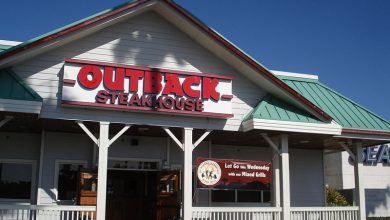
The Calories Hiding In Your Cocktail
Many people are extremely diligent when it comes to counting calories. They watch what they eat each meal, as well as total up snacks and other treats. The thing, however, that sometimes even the most diligent of calorie counters miss is the calories hiding behind the bar. It’s easy to lose track over a fun evening (or afternoon) with friends, yet the calories inside that cocktail may add up faster than you think. Additionally, many people mistake the calorie counts of different types of drinks, and a one ounce comparison of each doesn’t do the trick, since you wouldn’t drink the same amount of straight liquor as you would wine. So exactly how do the calories inside that drink stack up?
Spirits
Spirits by themselves are usually poured at about two ounces per drink. Here we’re talking a whiskey, or something of the kind, neat or on the rocks. A shot is a bit less, at one and a half ounces, but for ease of comparison we’ll stick to drinks that you’d normally consume during a casual gathering. That said, the pure spirits generally add up about the same, with each coming in at around 130 calories for brandy, rum, gin, tequila, vodka, and whiskey in a standard-pour two-ounce drink. With around 64 calories per ounce, a shot – just for the record – will come in a little bit less with around 100 calories. Most spirits are about 80 proof, which means they’re 40 percent alcohol, and their calories come from the alcohol itself, fermented usually from grains or other starches.
Wine and Beer
Wine and beer have somewhat similar amounts of calories – standard-drink-wise, not by ounce – than spirits. A standard-size restaurant pour for wine is five ounces, and the United States Department of Agriculture website states that a glass of wine is 123 calories. That said, not all wines are created the same. Rose comes in the lowest on the calorie count, at around 105 calories per glass. White wine, meanwhile, stands at about 120. Red, the highest, contains around 125 calories per serving on average. Beer, on the other hand, will cost you more than wine on the calorie scale, with most regular beers containing around 150 calories per 12-ounce glass, and light beers ranging from 50-100 depending on the type. The calories in wine and beer come from alcohol, but they also come from sugars and carbohydrates. The grapes fermented to make wine are higher in sugar than the base ingredients of spirits, while the longer-chain carbohydrates in beer that are not broken down into alcohol remain as added calories.
Cocktails and Mixed Drinks
If you’re watching your calorie intake, mixed drinks may not be your friend. The calorie count will vary widely, but it’s fairly safe to say that cocktails are the highest-calorie choice of all when it comes to making a choice at the bar. Mixed drinks contain spirits, but, depending on which drink you choose, also can contain a myriad of other higher calorie ingredients, from sugary liqueurs to fruit juices and even carbonated drinks (like a rum and coke). A strawberry daiquiri can hover around 200 calories, while a pina colada complete with coconut cream could cost you over 600. The exact total will depend largely on the specific ingredients used, and can be a difficult metric to get a read on if you’re not the one bartending. Suffice to say, cocktails are probably not the go-to choice if you’re looking for a low calorie option, though they can definitely be made (or requested) in certain ways that are healthier than others. As we’ve mentioned, the calories in cocktails come from alcohol, but also primarily from the added ingredients, including but not limited to those beautiful garnishes.
A Few Things to Note
If you’re watching carbs…
In case you’re counting carbs, or even just focusing more on reducing carbs versus calories, you’ll want to note that the lineup is a little different. While they still stack up the same relatively, spirits actually contain zero carbs. A good option for those trying to minimize their carb intake, spirits provide an easy choice. Wine and beer, because they have more sugars and – for beer – grains that didn’t break down, contain more carbs because of their base ingredients and fermentation process. Likewise, as you might imagine, cocktails are still the least advantageous option when it comes to cutting carbs. The added sugars, in particular, will tack on carbohydrates at a pretty rapid rate.
Look at your total intake.
Choosing a lower-calorie option doesn’t much matter if you drink a higher quantity of it versus drinking fewer of a higher-calorie choice. For example, while you may drink a couple of spirits neat during the course of an evening, you might consume three glasses of wine in the same duration due to its lower alcohol content. So though whiskey has a higher calorie count per serving, consuming more glasses of wine will still result in a higher calorie total overall, skewing the results you may think you’re getting by choosing the lower-calorie drink. Tolerance and preference factor largely into this equation and may vary widely from person to person, but keeping tabs on your totals will help give you a more accurate picture of how your choices are adding up.
Calories are everywhere, even in the places where we’d rather all just forget about them and relax with friends or kick back after a long day. That said, options do exist for managing calories and making healthier choices even when it comes to making a choice at the bar.



